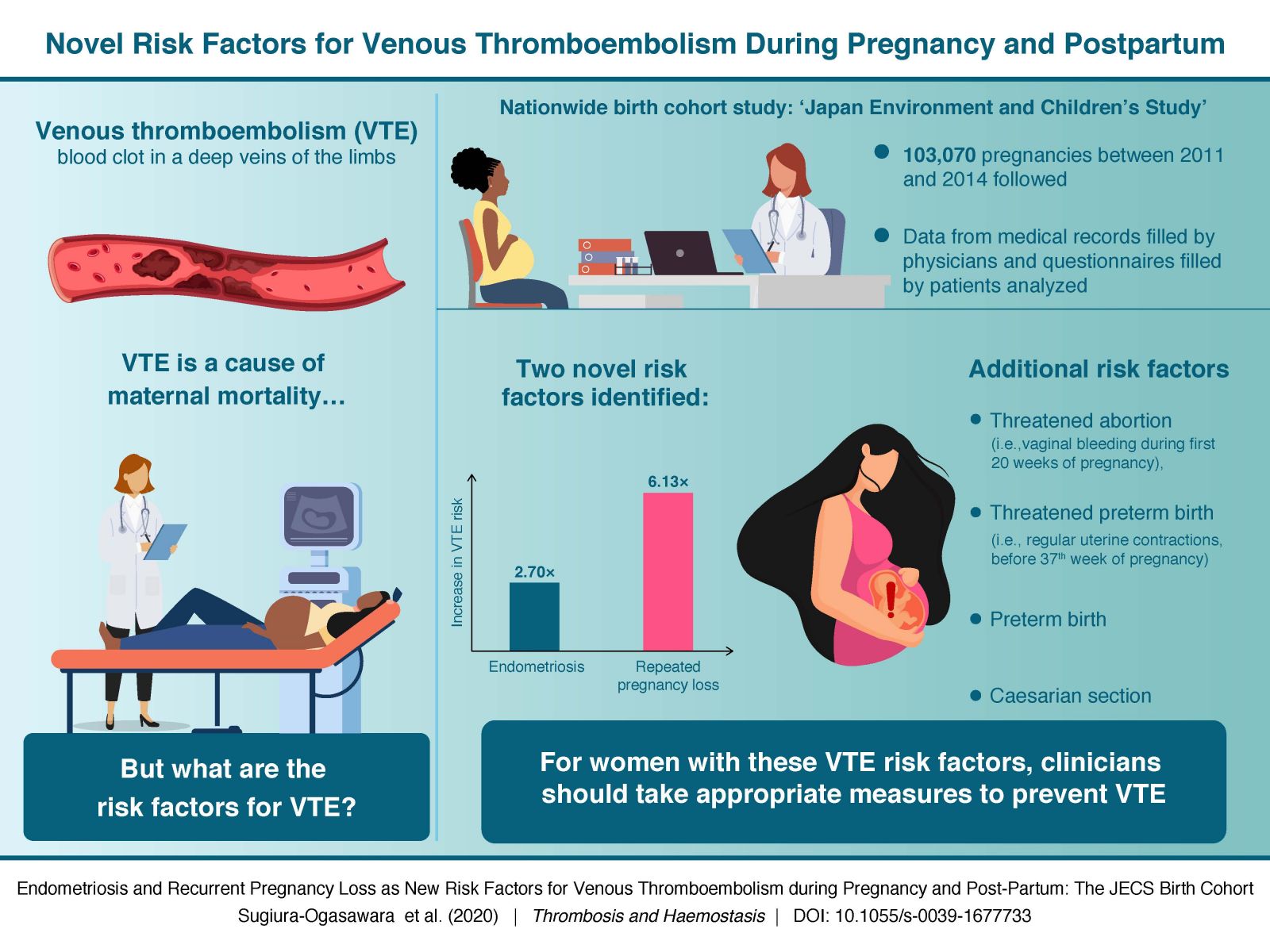

Venous thromboembolism refers to the occurrence of blood clots in deep veins, typically in the arm and legs, which can then travel up to the lungs and heart and cause life-threatening problems. This is a potential cause of maternal mortality during pregnancy and the postpartum period. It is therefore important for healthcare providers to understand the risk factors for venous thromboembolism so that they can recommend preventative measures to women who are at high risk.
To advance understanding of the risk factors for venous thromboembolism, researchers at Nagoya City University analyzed data from 103,070 pregnancies followed as part of the Japan Environment and Children’s Study. Their analyses identified two previously unknown risk factors for maternal venous thromboembolism: endometriosis and a history of repeated pregnancy losses. Their analyses also reconfirmed several previously identified risk factors: threatened abortion (i.e., vaginal bleeding during the first 20 weeks of pregnancy), threatened preterm labor (i.e., regular uterine contractions before the 37th week of pregnancy), preterm labor, and delivery via caesarean section.
What is it about?
The scientists used data from a large cohort of pregnant women in Japan to identify as of yet unknown risk factors for venous thromboembolism during pregnancy and the postpartum period.
Why is it important?
To prevent thrombosis during and after pregnancy, pregnant women and their healthcare providers need to know what the risk factors for venous thromboembolism are.
What this study adds
The scientists identified two previously unknown risk factors for maternal venous thromboembolism: endometriosis and a history of repeated pregnancy losses. If a woman has these risk factors, her healthcare providers should consider prescribing anticoagulant therapies to prevent venous thromboembolism.
Evidence before this study
The strongest risk factor for venous thrombolysis during and after pregnancy is a previous episode of the same. The other established risk factors include obesity, smoking, being ≥35 years old, having delivered three or more babies, systemic infections, threatened abortion, threatened preterm labor, preterm labor, and delivery via caesarean section. Current clinical guidelines recommend prophylactic anticoagulant therapy with low-molecular weight heparin for pregnant women at high risk of experiencing venous thrombolysis.
* The findings and conclusions of this paper and the lay-summary article are solely the responsibility of the authors and Science writer of this article, and do not represent the official views of the Japanese government.
Title of the paper: Endometriosis and Recurrent Pregnancy Loss as New Risk Factors for Venous Thromboembolism during Pregnancy and Post-Partum: The JECS Birth Cohort
Authors: Mayumi Sugiura-Ogasawara, Takeshi Ebara, Taro Matsuki, Yasuyuki Yamada, Toyonori Omori, Yosuke Matsumoto, Sayaka Kato, Hirohisa Kano, Takahiro Kurihara, Shinji Saitoh, Michihiro Kamijima, and the Japan Environment & Children's Study (JECS) Group
Journal: Thromb Haemost. 2019 Apr;119(4):606-617.

This contents and the article contribute the following Sustainable Development Goals:


